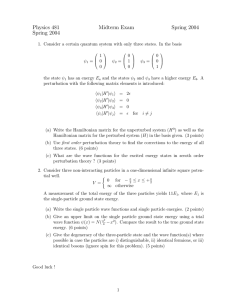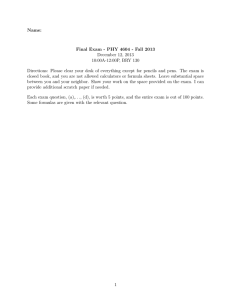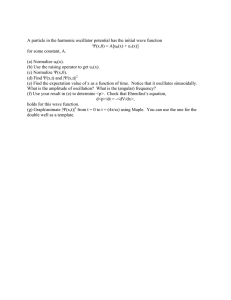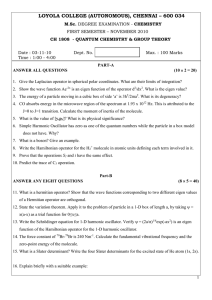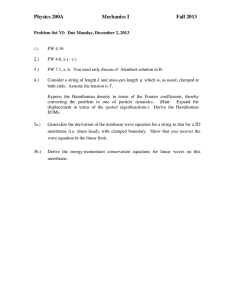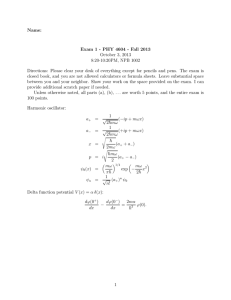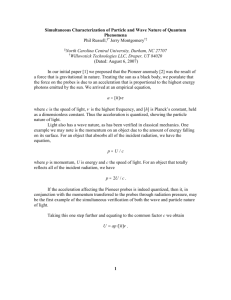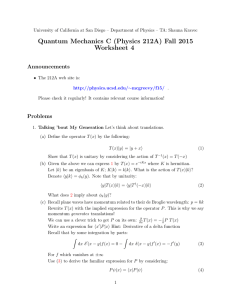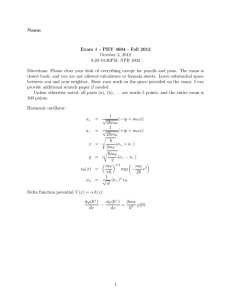PHY 6645 Fall 2002 – Mid-Term Exam 2 Instructions:
advertisement
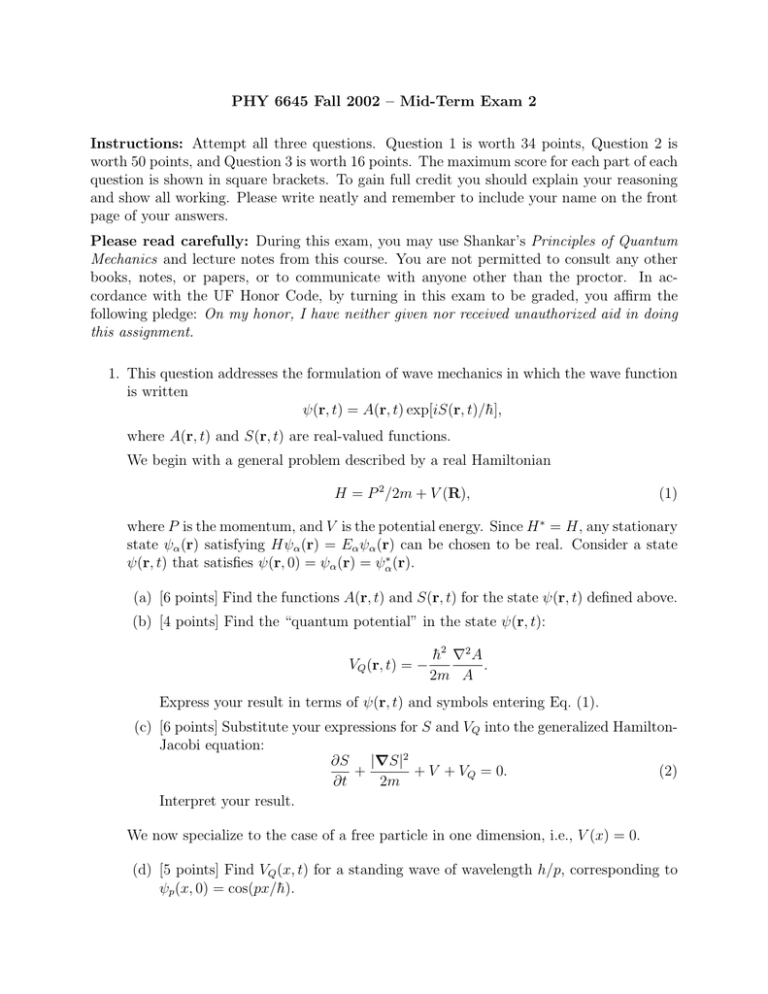
PHY 6645 Fall 2002 – Mid-Term Exam 2
Instructions: Attempt all three questions. Question 1 is worth 34 points, Question 2 is
worth 50 points, and Question 3 is worth 16 points. The maximum score for each part of each
question is shown in square brackets. To gain full credit you should explain your reasoning
and show all working. Please write neatly and remember to include your name on the front
page of your answers.
Please read carefully: During this exam, you may use Shankar’s Principles of Quantum
Mechanics and lecture notes from this course. You are not permitted to consult any other
books, notes, or papers, or to communicate with anyone other than the proctor. In accordance with the UF Honor Code, by turning in this exam to be graded, you affirm the
following pledge: On my honor, I have neither given nor received unauthorized aid in doing
this assignment.
1. This question addresses the formulation of wave mechanics in which the wave function
is written
ψ(r, t) = A(r, t) exp[iS(r, t)/h̄],
where A(r, t) and S(r, t) are real-valued functions.
We begin with a general problem described by a real Hamiltonian
H = P 2 /2m + V (R),
(1)
where P is the momentum, and V is the potential energy. Since H ∗ = H, any stationary
state ψα (r) satisfying Hψα (r) = Eα ψα (r) can be chosen to be real. Consider a state
ψ(r, t) that satisfies ψ(r, 0) = ψα (r) = ψα∗ (r).
(a) [6 points] Find the functions A(r, t) and S(r, t) for the state ψ(r, t) defined above.
(b) [4 points] Find the “quantum potential” in the state ψ(r, t):
VQ (r, t) = −
h̄2 ∇2 A
.
2m A
Express your result in terms of ψ(r, t) and symbols entering Eq. (1).
(c) [6 points] Substitute your expressions for S and VQ into the generalized HamiltonJacobi equation:
∂S |∇S|2
+
+ V + VQ = 0.
(2)
∂t
2m
Interpret your result.
We now specialize to the case of a free particle in one dimension, i.e., V (x) = 0.
(d) [5 points] Find VQ (x, t) for a standing wave of wavelength h/p, corresponding to
ψp (x, 0) = cos(px/h̄).
(e) [5 points] Find VQ (x, t) for a traveling wave of momentum p, described by a wave
function ψ̃p (x, t) that satisfies the initial condition ψ̃p (x, 0) = eipx/h̄ 6= ψ̃p∗ (x, 0).
(f) [8 points] Equation (2) with VQ = 0 describes the classical motion of a particle
having momentum p = ∇S. Use this fact to compare how close ψp and ψ̃p are to
the classical limit. Explain briefly why the standing-wave and traveling-wave representations, which are related to each other by a simple unitary transformation,
differ so much in their degree of “classicalness.”
2. Consider a one-dimensional harmonic oscillator, which is subject to a strong but brief
disturbance so that its Hamiltonian is
P2
1
+ mω 2 X 2
t < 0, t > T,
H = 2m 2
h̄ω1 N 2
0 ≤ t ≤ T,
where N = a† a is the number operator.
At time t = 0, the state vector for this harmonic oscillator is |ψ(t = 0)i = |bi, where
a|bi = b|bi,
hb|bi = 1.
(3)
Here, a is the annihilation operator and b is a real number.
(a) [12 points] Use Eqs. (3) to show that (up to an arbitrary phase)
1 2
|bi = e− 2 b
∞
X
bn
n=0
√ |ni,
n!
where N |ni = n|ni.
(b) [4 points] The Hamiltonian for this problem satisfies [H, Π] = 0, where Π is the
spatial-inversion operator (which maps x to −x). Does this imply that |bi is an
eigenstate of Π?
(c) [8 points] Evaluate hb|Π|bi.
(d) [6 points] Express |ψ(t)i for 0 < t < T in the basis {|ni}.
(e) [6 points] Express |ψ(t)i for t > T in the basis {|ni}.
(f) [6 points] Simplify |ψ(T )i in the case T = π/ω1 . (There should be no summations
in your final answer.)
(g) [8 points] In the case T = π/ω1 , what can you say about the product of uncertainties ∆X∆P at time t > T ? (Do not explicitly calculate ∆X or ∆P .)
3. [16 points] A particle in two dimensions is described by a wave function
ψ(x, y) = A(2y − x)2 e−(x
2 +y 2 )/2
,
where A is a normalization constant.
Suppose that lz , the angular momentum about the z axis, is measured in this state.
List the allowed values of lz and the probability of obtaining each value.

